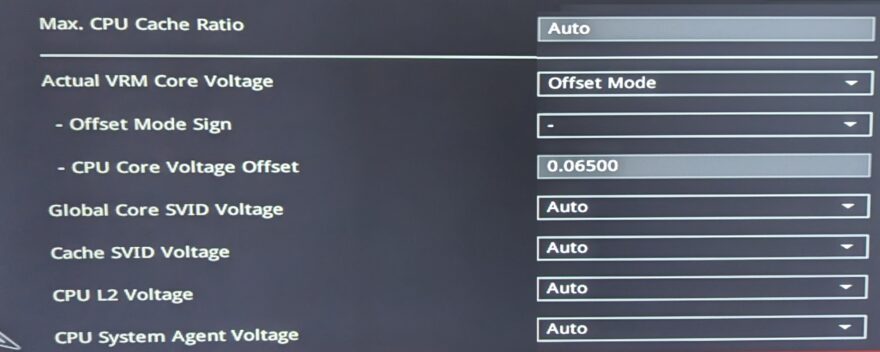AMD 5600X to 5800X3D – I Upgraded So You (Maybe) Don’t Have To!
Mike Sanders / 1 year ago

I will officially be middle-aged by the end of this week. Yes, I’m turning 40! – In fairness, given that I went bald at 24 and have had very little interest in music since 1989, I suspect that I’ve been middle-aged (at heart at least) for quite some time now.
With it being such a major event and milestone in my life, however, you might’ve been curious as to what I wanted to celebrate the occasion. – Maybe a skydive? A bungee jump? A weekend in Ibiza with the boys? (spoiler alert – Hell no!) – Nope, I was perfectly happy just getting an AMD Ryzen 5800X3D thank you very much! I like my PC and spend more time with it than anyone/anything else in my life (for better or worse) so it did seem like a logical choice. With that being said, however, this selection did come with a somewhat interesting caveat.
Namely, I already owned a Ryzen 5600X.
Would it really be worth spending this kind of money on what could potentially be quite a minimal upgrade? Well, since it wasn’t entirely my own cash, why the hell not?…

AMD Ryzen 5600X vs AMD Ryzen 5800X3D
I should start by noting that Andy (sort of) covered this topic in a video a little over a year ago. And, incidentally, in a hell of a lot more detail in regard to benchmarks, etc. than you’re going to get from me here. If you are, therefore, interested in checking that out, I’ve embedded it in for you below.
With that being said, I think there is a key difference in perspective between his and my approach.
Andy predominantly concentrated on the 5600X and 5800X3D as a straight-up choice for someone new to the Ryzen 5000 platform. I, however, are looking at this purely from the perspective of a (now former) 5600X owner making the apparent ‘upgrade’ to the 5800X3D.
So, why did I want a 5800X3D? Well, because it was just about the last upgrade path I had left to me on the AM4 platform. – Between my Nvidia 4070 Ti and 32GB of DDR4 RAM (3,600MHz), the Ryzen 5600X felt like the only weak link left in the redundancy chain of increasing upgrade costs to diminishing returns.
Put simply, after the 5800X3D, my upgrade path was effectively brought to an end. My only next option would be a total system renewal. You know, motherboard, processor, RAM, GPU, the works. Something I don’t intend to do for at least another two/three years!
Yep, this 5800X3D is my personal last hurrah on the AM4 platform. And very much so given that I’ve owned a 1600X, 2600X, 3600X, 5600X, and now, finally, a 5800X3D!
Benchmarks – Some Before & After!
So, getting to the point, is it worth upgrading to the 5800X3D from the 5600X? Well, it can be summed up in two brief statements; ‘sort of’ and ‘it depends’. Before going into more depth though, let’s take a look at what my initial benchmark results (before and after) were;
System Specifications
- MOTHERBOARD – ASUS ROG STRIX B550-A GAMING
- RAM – CORSAIR VENGEANCE 32GB (4 X 8GB) AT 3,600MHz
- GRAPHICS CARD – GIGABYTE 4070 TI
- ALL BENCHMARKS RUN OFF AN M.2 SSD @ 1440p RESOLUTION – GRAPHICS HIGH/ULTRA WHERE APPLICABLE
| BENCHMARK | AMD RYZEN 5600X | AMD RYZEN 5800X3D |
| PCMark 10 Express | 5,831 | 6,057 |
| 3DMark TimeSpy | 18,006 | 20,008 |
| FINAL FANTASY XV | 15,233 | 16,458 |
| FORZA MOTORSPORT 7 | 41.8 (1%) / 82 (AVERAGE) – FPS | 51.9 (1%) / 94 (AVERAGE) – FPS |
| MODERN WARFARE 2 | 114 (1%) / 157 (AVERAGE) – FPS | 141 (1%) / 157 (AVERAGE) – FPS |

High End? Minimal! – Low End? Phenomenal!
So, on average, the AMD 5800X3D outperformed the 5600X by a margin of around 10% at the ‘top-end’ of the scale. Something which, when you look at the numbers on the surface, is not overly impressive. The key benefit of the 5800X3D, however, was undoubtedly seen in the 1% lows.
If you’ve heard the hype that the 5800X3D really kills it at the 1% low points, then you’ve heard 100% correctly! – The 1% low margins in my (admittedly limited) benchmarks improved by as much as very nearly 20%. That’s huge!
Why is this so important though? Well, when your games are running at around 100 fps you probably don’t bat an eyelid as things flicker between 95fps to 110fps. Those occasional 1% low drops, however, can hit hard and very notably! If you don’t see them, you, at the very least, feel them!
Overall, my gameplay experience just felt insanely smoother on the 5800X3D making my choice to ‘upgrade’ to it feel not just like a good one, but like a legitimate upward pathway too!
That’s not to say though that the AMD 5800X3D doesn’t have its problems!

But First… A Disclaimer!
I am aware that it’s understood and widely documented that while the 5800X3D provides excellent comparative results in 1080p resolution, these returns diminish quite notably at 1440p, and almost entirely at 4K. – With this in mind, I should confirm that I only tested in 1440p as this is my preferred resolution (it has been for 6 years now).
So, for those of you looking for comparative results at 1080p or even 4K, I’m going to have to refer you directly to Andy’s video (again, embedded above).

One Hot Momma!
Having a rather nice 240mm AIO cooler, I had gotten more than a little used to seeing maximum temperatures of around 70C on my 5600X. With the 5800X3D coming with 8 cores and a 100w TDP (2 cores and 35w more respectively), however, I wasn’t naive enough to think that things were not going to get a little toastier. Hell, just a little online research confirmed this quite easily. Pretty much all 5800X3D owners agree that ‘out of the box’ it runs notably warmer than prior Ryzen releases.
In truth though, and in very blunt terms, my benchmarking found that ‘notably warmer’ was something of an understatement.
In blunt terms, the AMD 5800X3D runs hot! – Like… VERY hot! SURPRISINGLY hot!
Now, ‘hot’ is, of course, a subjective term. Given that I’d gotten used to a nice cool (and quiet) 70C max on my AMD 5600X though, seeing the 5800X3D peak at 91.9C was somewhat alarming. Particularly given that its thermal throttling point is 90C (which, as I understand it, is 5C lower than most other Ryzen CPUs).
So yeah… Despite a pretty high-end 240mm AIO, I was still, admittedly at a brief 100% intensive CPU load, hitting the heat wall. Admittedly, this is a bit of a lame excuse to recycle this long-dead meme, but I can relate to Speed Racer’s rival here. I mock those who are going over that cliff (coming close to exceeding thermal limits), then scream in bloodcurdling terror as it happens to me.
At this point, and I’m going to be honest here, my initial enthusiasm towards the AMD 5800X3D did start to shade a little towards buyer’s remorse. – I like great performance, but, deep down, I think I like ‘cool and quiet’ more.
There was, however, one silver lining to that rather dark and ominous cloud. – You remember how earlier I said how online users pretty much universally agreed that the 5800X3D ran hot? Well, a lot of them also suggested one somewhat universal solution… Undervolting.

Undervolting = Great Success?
Now, for those of you unfamiliar with the term, ‘undervolting’ is essentially overclocking in reverse. You provide a component with less power with the (sort of) intention of reducing performance. – Why on Earth would you want to do this? Well, with many processors and graphics cards, a tiny drop in power can result in practically identical performance but for significantly greater overall efficiency.
Less power = Less Heat. That’s the theory at least. And, best of all, unlike overclocking which does come with some risks, undervolting is practically entirely safe to do (*cough* do so at your own risk *cough*). If it doesn’t work, it doesn’t work. You’re sending less power so it’s not like anything is going to fry! (*cough* legal disclaimer advising you against taking my advice to cover my arse *cough*)
Now, in specific regard to the AMD 5800X3D, I had heard from many sources prior to purchasing that undervolting was hugely advantageous on this CPU. Having never tried this before though, and being something of a skeptic when it came to messing with stock settings, I dismissed this entirely out of hand. – That was, however, until I was getting 91.9C in benchmarks.
So, into the BIOS I went and I spent the next 2-3 hours playing around with the offset voltage until I found what I considered to be an incredible compromise.
| BENCHMARK | AMD RYZEN 5800X3D STOCK | AMD RYZEN 5800X3D UNDERVOLT (- 0.085) |
| PCMark 10 Express | 6,057 (79C) | 6,039 (67C) |
| 3DMark TimeSpy | 20,008 (91.9C) | 19,926 (77C) |
| FINAL FANTASY XV | 16,458 (83C) | 16,466 (69C) |
| FORZA MOTORSPORT 7 | 51.9 (1%) / 94 (AVE) – FPS – (74C) | 69.6 (1%) / 94 (AVE) – 67C |
| MODERN WARFARE 2 | 141 (1%) / 157 (AVE) – FPS (76C) | 142 (1%) / 157 (AVE) – 68C |
As per most undervolting recommendations (CPU wise at least), I started at -0.050 and worked ‘up’ (or should that be down?) from there. The overall concept is to keep going until the performance drops off notably and then start tweaking to find the balance you want. Hence the aforementioned 2-3 hours in fiddling, benchmarking, and repeating.
Eventually settling on -0.0850, what you see above is basically the exact same level of performance prior to the undervolt with an overall temperature reduction of circa 10-15C.
For me, this is a huge win-win situation, and with no cost to myself other than a bit of time, this solved what I considered to be my sole issue with the AMD 5800X3D – It was running hot, but no longer!

A Worthy Upgrade? Am I Happy? Do I Recommend It?
The AMD Ryzen 5800X3D currently retails for an incredibly unstable price of around £275-£300 (depending on what day you check Amazon – no joke!). Although it’s nowhere near as expensive as the £500 (ish) it was at launch 18 months ago, it is still stubbornly holding a pretty high price tag. Predominantly because it’s (probably) still within the top 3 most ‘in-demand’ processors on the market right now. And yes, this is even despite the subsequent release of AMD Ryzen 7000 and Intel 13th and 14th-generation CPUs.
And there is, of course, a good reason for that. It’s bloody excellent and arguably the best AM4 processor you can buy (on a platform that is still widely used, but now, technologically speaking, dead).
With the 5600X going for less than half the comparative cost of the 5800X3D, however, one conclusion I can undoubtedly draw is that in terms of value for money and price per frame (and as it was during Andy’s video last year) the 5600X is the massively better choice from a common sense/value for money point of view. So, new buyers, unless you REALLY need that extra performance from the 5800X3D, I’d agree with Andy that the 5600X is the much better choice as a new individual purchase.
But, hey, if common sense truly existed in the PC world people wouldn’t spend over £1,500 on graphics cards, would they?…
For me though, the AMD 5800X3D came with an added bonus. My spare PC (used primarily by ‘the wife’) was rocking a Ryzen 2600X. So, for one CPU, I’ve now been able to upgrade two systems. I’m happy, the wife is happy, everyone is happy.

A Conclusions (Of Sorts)
To make some kind of conclusion, is it worth upgrading from the 5600X to the 5800X3D? – Well, I think it’s going to have to be a somewhat unhelpful and incredibly specific ‘it depends’. Overall there are a lot of pros to getting the 5800X3D as an upgrade from the 5600X, but I’d be disingenuous if I didn’t say that they’re counterbalanced by significantly less, but possibly more persuasive, cons.
Let me quickly run through them:
PROS:
- A definite performance upgrade on the AMD Ryzen 5600X
- Almost certainly the last and best CPU we’ll see released on the AM4 platform making it an ideal final upgrade hurrah for your system
- The price has fallen quite notably from its heady days of circa £500
- A silkier smoother gameplay experience. 1% lows aren’t sexy, but seeing them improve by as much as 20% will catch your attention
- Huge temperature/efficiency benefits are there to be had for those willing to play around with the undervolt settings
- The 5800X3D will be a more viable long-term solution than the 5600X. A bit like what we saw with the AMD 8350 or the Intel 9900K, I suspect people will still be using this processor (happily) in 5-7 years’ time
- I didn’t benchmark this, but I have noted video rendering has improved quite notably (thanks to the 2 extra cores no doubt)
- It’s sexy. A stupid point maybe, but saying you own a 5800X3D comes with a hell of a lot more gaming prestige/cred than a 5600X.
CONS
- The high-end performance uplift isn’t as substantial as you might think despite those extra cores and masses of L3 cache memory. Don’t forget too that the 5800X3D has slightly lower comparative clock speeds to the 5600X (to help with temperatures).
- In some games, excluding 1% lows which do seem to be improved across the board, the difference is genuinely minimal
- As an individual purchase, the cost per frame probably sees this upgrade fall more into the wasteful than useful side of things. For an AMD 5600X owner, you’d probably be better sinking that extra £280 into either your next build or maybe going a tier higher model should your graphics card also be feeling its age/limitations – Presuming other upgrade paths are still open
- Hot! At stock levels, this pushed my somewhat high-end 240mm AIO pretty hard. Basic and even mid-tier AIO coolers will struggle, big time, to handle this. Air coolers? Only premium models should look to apply!
- In terms of sunk costs, I don’t think you’re going to feel like you’re getting an additional £275’s worth of performance from this ‘upgrade’ from the 5600X
For a summary though, let me ultimately say this; The 5800X3D is a great processor. In fact, I strongly suspect it will go down as one of the greatest of all time. – If you already own an AMD Ryzen 5600X though, I’d only personally recommend the upgrade if you have something you can put that ‘old’ CPU towards. Sell it, build another system, whatever. Ultimately though, I think you can only justify making the upgrade to the AMD 5800X3D from the 5600X if the latter is used somehow to subsidise the move.
Yep, I think I’m happy with that conclusion. Get the AMD 5800X3D if you can live with the expense. And for the love of God have a decent cooler ready. In fact, even then, still hugely consider undervolting it! – But with that being said, I think you’ll feel a lot happier doing so and warranting the cost if you can put your old 5600X to some good use in the process.
If you’re just going to let your old AMD 5600X sit in a drawer, I think you’re massively increasing your chances of having some buyer’s remorse in moving to the 5800X3D. If you can though, and with those aforementioned conditions, make the move. The 5800X3D definitely lives up to the hype!
Retail Links:
Amazon – AMD Ryzen 5600X – £137.00 – Click here!
Amazon – AMD Ryzen 5800X3D – £284.99 – Click here!



















